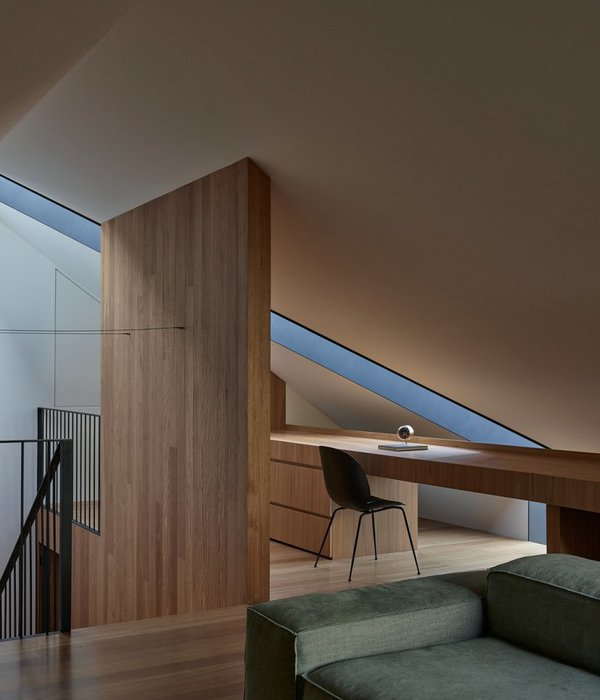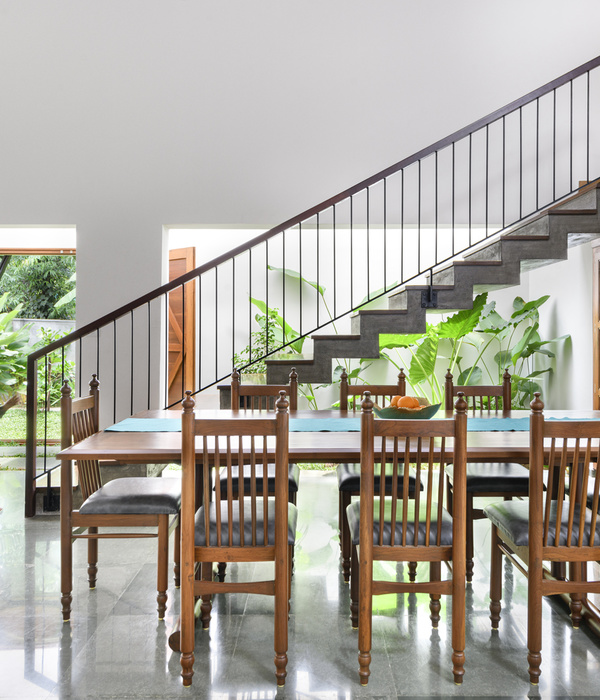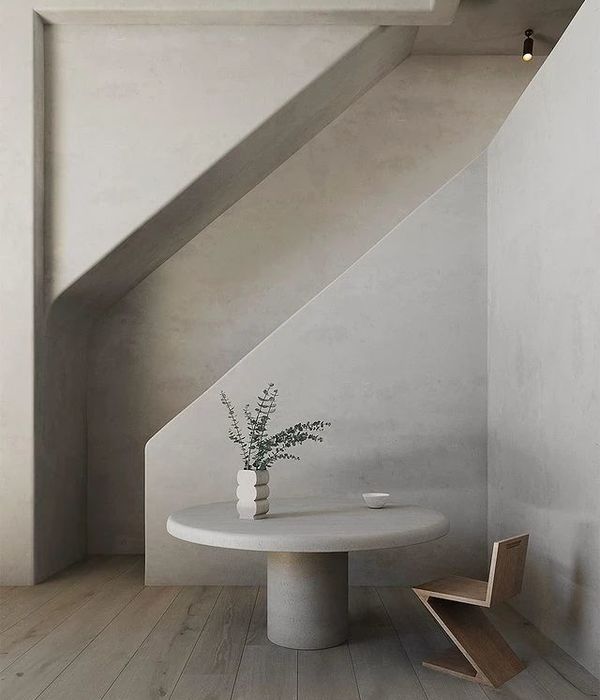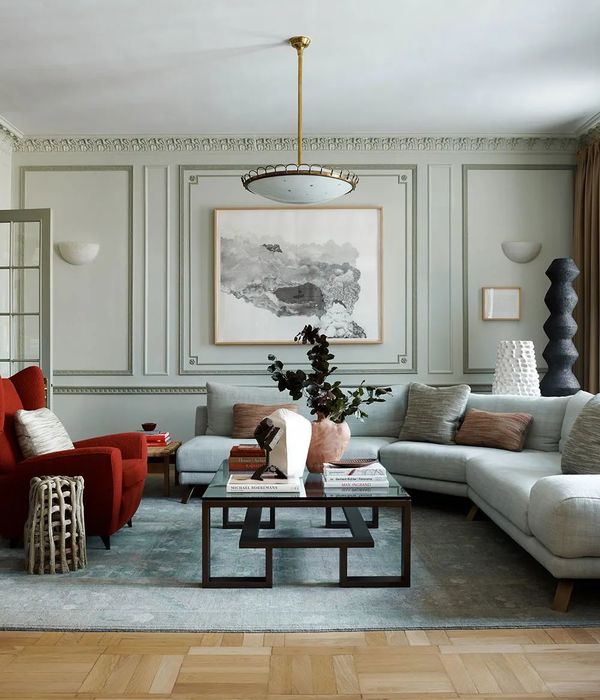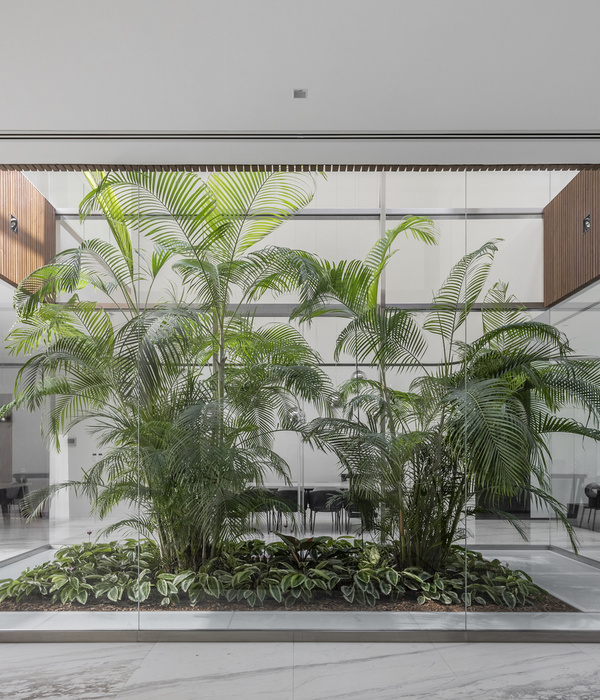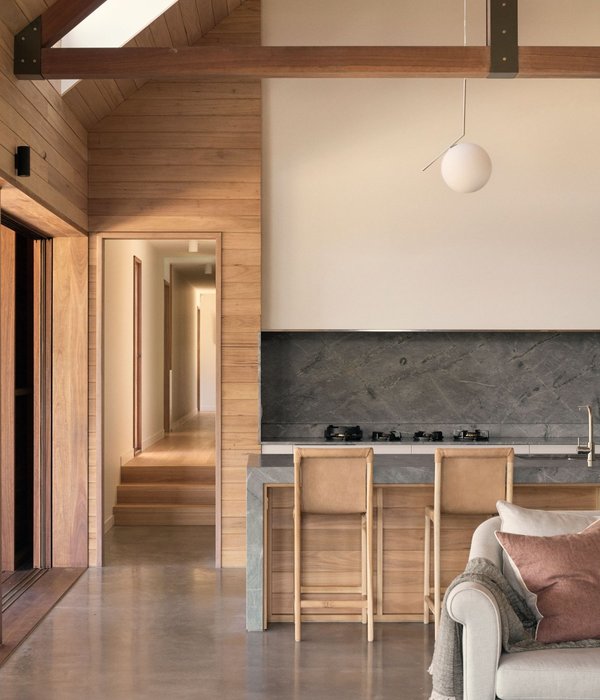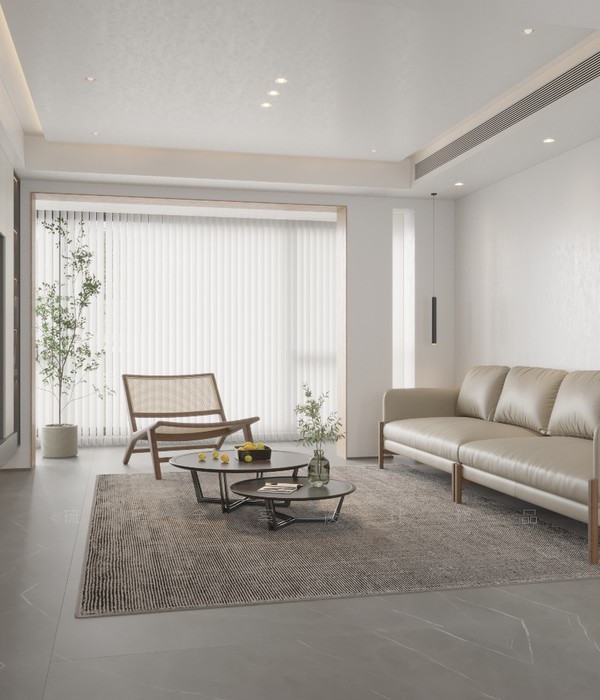© Shinkenchiku Sha
(三)沙田新干线
架构师提供的文本描述。这座建筑是对日本传统木屋的改造。它的木框是在拆除不必要的部件后暴露出来的。只有将弯曲的墙壁插入其中,才能创建空间函数。在设计“带弧形墙的小屋”的过程中也遇到了类似的挑战,这是一种在Shodoima的公共厕所。在那里,空间是由一个9毫米钢弯曲墙定义的,这是在木制屋顶结构下建立的,借鉴了该地区的传统酱油工厂。曲墙形成了雪松木桶的灵感来源,呈现出一种自力结构的审美特征。唯一令人遗憾的是新建的木框。理想的情况是,它应该从旧房子周围的地区和重建在一个新的地方,但所需的紧凑的时间表不允许我们花时间去寻找一个合适的现有建筑。然而,从那时起,我们就把它看作是一种独特的可能性,可以用弯曲的墙壁来分割空间,而这与外部结构无关。
Text description provided by the architects. This building is a reconfiguration of a traditional Japanese wooden house. Its wooden frames were exposed after the removal of unnecessary parts. Only by inserting curved walls into it, spatial functions were created. A similar challenge was experienced in the process of designing “Hut with the Arc Wall”, a public toilet in Shodoshima. There, space was defined by a 9mm steel curved wall, which was built under the wooden roof structure by reference to traditional soy sauce factories in that area. An inspiration from cedar barrels of say source was formalized in the curved wall, which showed an aesthetic of self- supporting structure. The only thing to be regrettable was newly built wooden frames. Ideally, it should have been moved from an old house around that area and rebuilt in a new place, but the required tight schedule didn’t allow us to spend time to look for a suitable existing building. However, since then, we have seen it as a distinctive potential for reconfigurations to divide space with curved walls, which is not related to the outer structure.
Floor Plan - After
楼面平面图-事后
该项目提供了一个机会来测试它,委托一对夫妇谁拥有保存良好的一层木屋。现有的房子里有许多纯日本设计的房间,似乎不适合在那里开始新生活的一对年轻夫妇。不必要的部分被移除支撑结构,弯曲的墙壁被放置在新的灰泥地板上,其中嵌入了地板加热。客房、浴室和床房周围都是弯曲的墙。其余的空间用于厨房、储藏、餐饮和生活空间。弯曲墙上方的部分空间用作阁楼。
The project presented an opportunity to test it, commissioned from a couple who owned a well-preserved one-storey wooden house. The existing house contained many rooms in pure Japanese design, which seemed to be not suitable for a young couple who started a new life there. Unnecessary parts were removed supported structurally, and the curved walls were positioned on the new mortar floor, in which underfloor heating was embedded. Guest room, bathroom, and bed room are surrounded by the curved wall. The rest of the space is devoted to the kitchen, storage, dining and living spaces. A part of the space above the curved wall is used as a loft.
© Shinkenchiku Sha
(三)沙田新干线
用20毫米弯曲胶合板建造墙壁是解决有限预算问题的办法。然而,一旦施工开始,这些面板的不那么精确无助于实现所需的空间。它迫使我们改变建筑方法,把25毫米的方形杆夹在弯曲的胶合板上。建筑工人的努力解决了预期的预算超支问题。
Constructing the walls with 20mm curved plywood was the solution to the limited budget. However, once the construction started, the much less accuracy of those panels didn’t help to realize the desired space. It forced us to change the construction method to frames of 25mm squared rods sandwiched with curved plywood panels. The expected budget overruns were solved by the builder’s effort.
现有房屋的门窗配件被重复使用。浴室的内部空间由纤维增强聚碳酸酯完成,并在其上放置双层聚碳酸酯天花板。外墙新添了烧焦的雪松板,一些窗户被木制配件所取代。这个简单的手势创造了一个新的空间,而房子的历史仍然存在。
Door and window fittings in the existing house were reused. The interior space of the bathroom was finished with fiber reinforced polycarbonate, on which a double layered polycarbonate ceiling was positioned. The exterior wall was newly cladded with burnt cedar boards, and some windows were replaced by wooden fittings. The simple gesture created a new space, while the history of the house remained.
© Shinkenchiku Sha
(三)沙田新干线
Architects Tato Architects
Location Japan
Category Renovation
Architect in Charge Yo Shimada
Design Team Yo Shimada, Keita Kurokoshi
Area 87.0 sqm
{{item.text_origin}}

